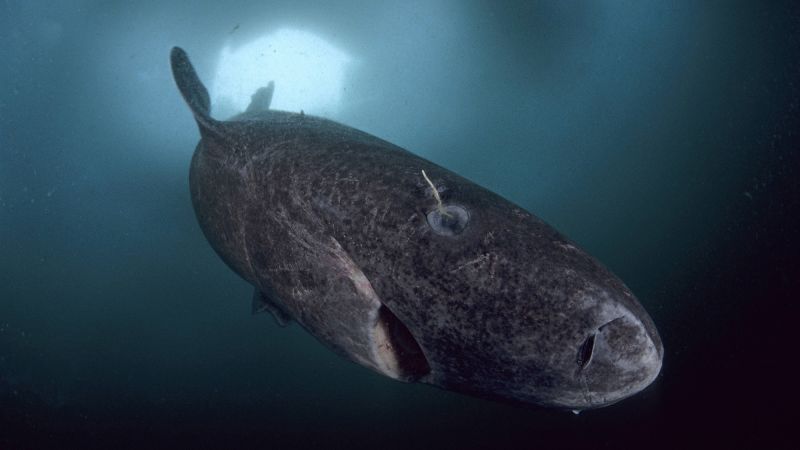The quest for understanding longevity—a fascination embedded in human culture and literature—finds an echo in the story of Peter Pan, whose words urge us to resist the aging process. This sentiment is not merely poetic but reflects a fundamental quest in science: unlocking the secrets of a longer life. Extensive research has been targeted on this profound challenge, and surprisingly, nature itself offers some of the clearest insights into this enigma, revealing lessons that can be gleaned from the natural world.
One of the remarkable case studies in longevity is Jonathan, a giant tortoise believed to inhabit the remote island of St. Helena. According to estimates, Jonathan’s birth date approximates back to 1832, which could mean he is over 200 years old, yet the precise date remains uncertain. Despite the limitations that come with age, like blindness and lack of smell, Jonathan demonstrates a keen sense of hearing and continues to engage with his environment by sunbathing in warmer weather. His existence exemplifies the long-lived potential found within certain species, particularly giant tortoises. However, claims of longevity in nature don’t end with Jonathan; they extend to the depths of the ocean.
The Greenland shark serves as another fascinating figure in the narrative of longevity. Found swimming sluggishly in the frigid waters of the North Atlantic and Arctic, these sharks have lifespans exceeding 400 years, potentially longer than any creature known to science. Fishing and environmental studies discovered that these sharks might have been alive during the colonial era, a truly astonishing feat for any living organism. Scientists have hypothesized that their protracted life is related to unique genetic traits, insights from which might be essential for extending human lifespans.
Shifting focus to planetary exploration, notable discoveries have emerged from extraterrestrial locations. The “Black Beauty” meteorite, retrieved from the Sahara Desert in 2011, has become a critical piece of evidence in understanding ancient Mars. The meteorite, believed to have originated from Mars approximately 5 to 10 million years ago, contains mineral grains that point to the historical presence of liquid water on the planet over 4.45 billion years ago. Such findings imply that early Mars might have had habitable environments, including hot springs, further igniting the scientific curiosity regarding past life on our neighboring planet.
Alongside these Martian discoveries, NASA’s Perseverance rover continues to excavate the enigmatic landscape of Mars. Recently completing a sojourn up Jezero Crater, the rover encountered striking zebra-striped rocks, adding complexity to the geological narrative of the red planet. The rover now aims to explore the oldest rocks on Mars, potentially elucidating its obscure history.
Returning to Earth, concerns about biodiversity have come to the forefront, particularly regarding the decline of monarch butterflies, notable for their vibrant colors and essential role in plant pollination. Climate change, habitat destruction, and pesticide usage pose significant threats to their population. The US Fish and Wildlife Service has considered the possibility of designating these pollinators as a threatened species, emphasizing the importance of intervening to reverse declining trends. These pollinators play critical roles in maintaining ecological balance, and their disappearance could have far-reaching consequences for various ecosystems.
In another fascinating dip into nature, a creature identified on a New Zealand beach turned out to be a spade-toothed whale—a remarkable finding due to its rarity. Marine biologists, alongside local Māori communities, explored the remains yielding new insights into a species that had nearly entered the realm of myth due to its elusiveness.
The scientific study of ancient human DNA has also provided fascinating insights into our ancestral past, specifically regarding interactions with Neanderthals. Recent findings allowed researchers to determine that early Homo sapiens engaged and interbred with Neanderthals approximately 45,000 years ago, reshaping our understanding of human evolution and migration.
Intriguingly, these findings extend into a broader narrative of exploration, with other significant discoveries reported, such as a humpback whale’s exhilarating 8,106-mile migration and the resilience of bacteria nicknamed “Conan the Bacterium.” This hardy microorganism withstands radiation levels that would be lethal for humans, prompting considerations on how such properties may assist in safeguarding astronauts embarking on deep-space missions.
Bringing it all back, the exploration of our world and beyond continuously unveils new dimensions of understanding. Through studies and discoveries, whether about the creatures inhabiting our oceans or the secrets of ancient planets, we find ourselves more deeply interconnected with the fabric of life and the mysteries of existence. To keep up with these developing narratives, readers are encouraged to sign up for reputable science newsletters to remain informed and inspired.



